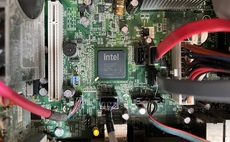Leaks indicate how AMD plans to take on Intel in high-performance desktop and server computing
An engineer at CERN, the European scientific laboratory, has inadvertently revealed details of Zen, AMD's long-trailed bid to "re-enter" the high-performance x86 desktop and server market. CERN ...
To continue reading this article...
Join Computing
- Unlimited access to real-time news, analysis and opinion from the technology industry
- Receive important and breaking news in our daily newsletter
- Be the first to hear about our events and awards programmes
- Join live member only interviews with IT leaders at the ‘IT Lounge’; your chance to ask your burning tech questions and have them answered
- Access to the Computing Delta hub providing market intelligence and research
- Receive our members-only newsletter with exclusive opinion pieces from senior IT Leaders



















